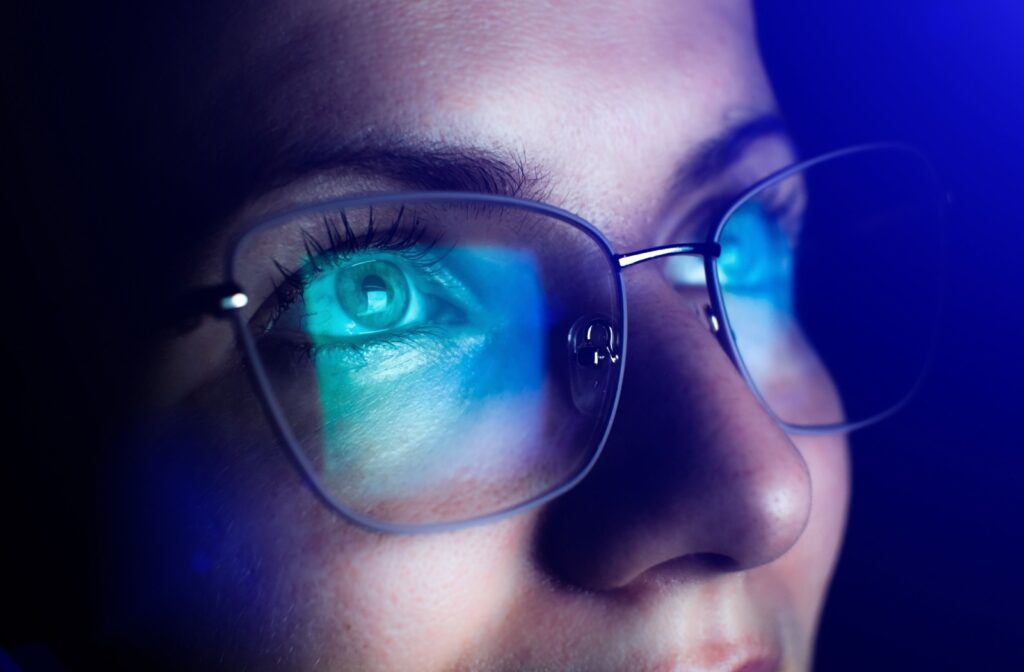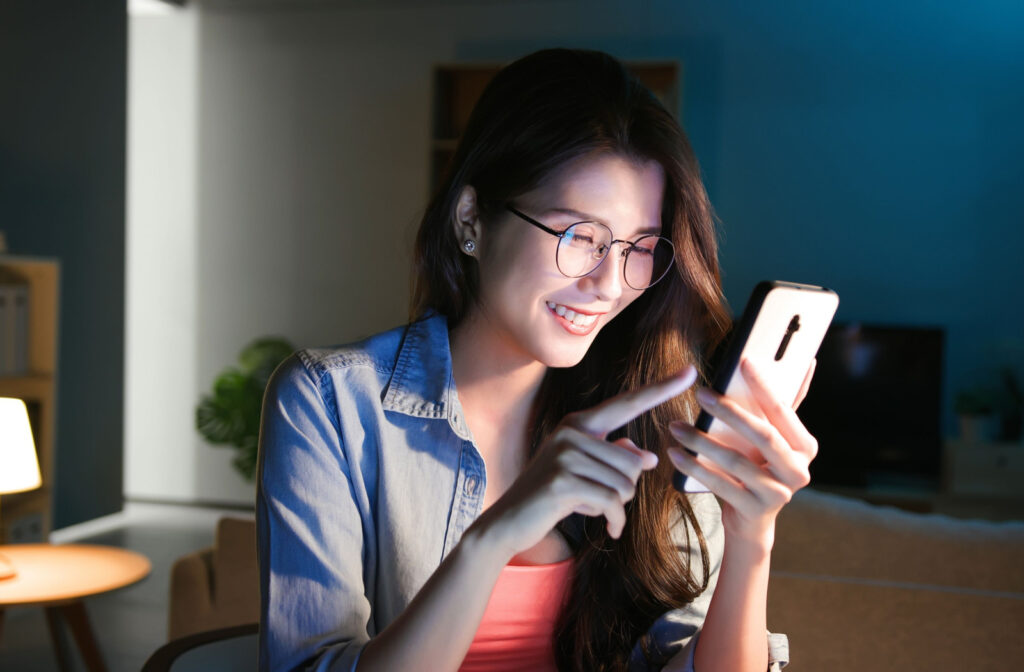Blue light glasses—a stylish yet functional eyewear solution designed to combat the potentially negative effects of blue light emitted by digital devices. But how effective are these glasses, and can you trust that they are actually doing something? There are several ways to test blue light glasses:
- Visually inspect the lenses
- Using a digital test image
- UV flashlight and a blue light test card
- Ask your optometrist!
Screen time is almost unavoidable in today’s digital age. Whether you’re working, studying, or unwinding with some entertainment, screens are a constant companion. The research is ongoing into how blue light affects our eyes and overall health. But it does appear beneficial to avoid blue light in some circumstances, like where it could affect our sleep. So, it pays to know that our blue light glasses are doing what we expect them to.
How Blue Light Glasses Work
Blue light glasses have special lenses that filter out or block blue light wavelengths. Researchers believe blue light can contribute to sleep pattern disruptions by suppressing the body’s release of melatonin. This happens particularly with nighttime use of electronics because other forms of blue light—like that from the sun—can potentially help balance the circadian rhythm.
The Science Behind Blue Light Glasses
The lenses in blue light glasses typically contain a coating or embedded technology that selectively filters out blue light. The effectiveness of these lenses can vary based on the quality of the materials used and the specific technology employed. Some glasses may block 100% of blue light, while others might filter out a significant but lesser portion. Understanding this variability is crucial when testing and selecting a pair.
Step-by-Step Guide to Testing Blue Light Glasses
Testing blue light glasses at home is easier than you might think. Here’s a step-by-step guide for a few test options:
Visual Inspection Test
Sometimes, simple is better. So, start with a simple visual inspection before diving into the more technical tests:
- Hold the glasses up to a white LED light source.
- Look for a slight yellow tint on the lenses, which indicates the presence of blue light filtering.
Digital Screen Test
You can test your blue light glasses with the very thing emitting the light you’re trying to block. Grab your phone or computer screen:
- Find a blue light test image online.
- Hold the lenses over the image.
- Observe any changes in color or brightness through the lenses. Effective blue light glasses should reduce the intensity of the blue light.
UV Flashlight Test
Don’t want to use your phone or computer for blue light testing? No problem if you have a UV flashlight and a blue light test card:
- Shine the UV flashlight on the test card without the glasses. The card should change color in response to the blue light.
- Repeat the process while holding the glasses over the card. Effective blue light glasses should prevent the card from changing color, indicating they are blocking the blue light.
Tips on Selecting the Right Pair of Blue Light Glasses
Blue light glasses aren’t a one-size-fits-all solution, and “best” is a relative term. Several factors can influence your decision when it comes to choosing the right blue light glasses:
Lens Quality
Ensure the lenses are made from high-quality materials that offer effective blue light filtration. Check for certifications or endorsements from eye care professionals. Also, consider lens qualities like whether they are anti-glare, which could be another factor in eye discomfort.
Comfort & Fit
Comfort is key since you’ll likely wear these glasses for extended periods. Look for adjustable frames and lightweight materials. Doing this helps ensure your eye comfort doesn’t come at the cost of discomfort elsewhere.
Style & Design
While functionality is crucial, there’s no reason to compromise on style. Many brands offer various designs to suit different tastes. Blue light glasses without prescription lenses are typically very affordable. So, many people may want more than one pair to go with different styles or outfit choices.
Price & Warranty
We mentioned above that they are affordable, but you don’t want to sacrifice quality. While you don’t have to break the bank, be wary of extremely cheap options. Investing in a quality pair often means better protection. And look for warranties that guarantee the longevity of your glasses.

Discuss Your Blue Light Protection Needs with Your Eye Doctor
Protecting your eye health in the digital age is more important than ever. Blue light glasses offer a practical and stylish solution to reduce the effects blue light may have on us. By understanding how these glasses work and how to test their effectiveness, you can ensure you’re making a wise investment in your eye health.
Feel empowered to take control of your eye health by testing and selecting the best blue light glasses for your needs. But call our team at Griffin Optometric Group if you still have questions. We’re happy to discuss blue light and its potential effects on you and your eyes in greater detail.




